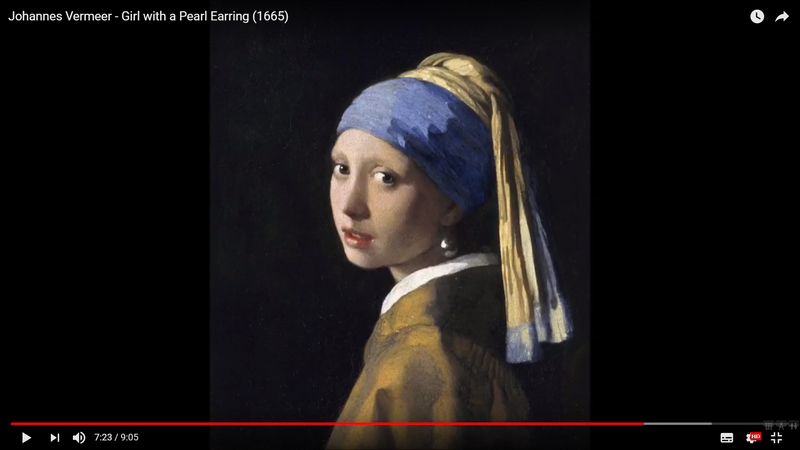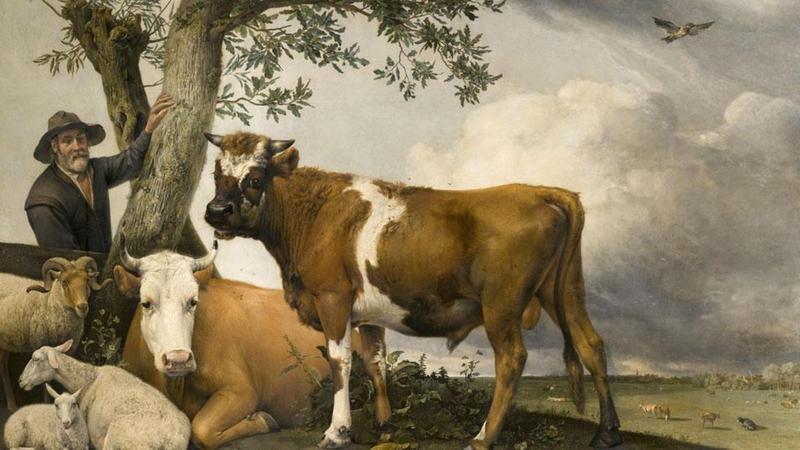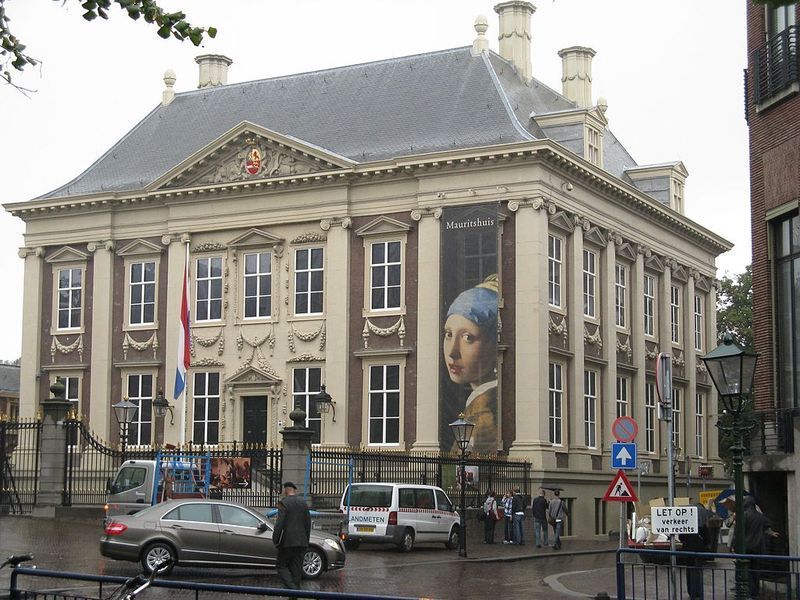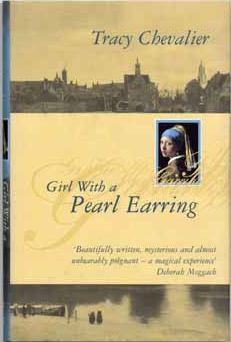2017年12月03日
♡☆♡ What attractive and beautiful eyes she has ♡☆♡
☆ Who was she? ☆
♡☆♡Johannes Vermeer, Girl with a Pearl Earring♡☆♡
♡☆♡ What beautiful eyes she has♡☆♡
☆ Who was she? ☆
♡☆♡Johannes Vermeer, Girl with a Pearl Earring♡☆♡
https://youtu.be/M-jLsoA1i_o
Smarthistory. art, history, conversation.
2015/03/10 に公開
Johannes Vermeer, Girl with a Pearl Earring, c. 1665, oil on canvas, 44.5 x 39 inches (Mauritshuis, The Hague). A conversation with Dr. Steven Zucker and Dr. Beth Harris.
カテゴリ 教育
ライセンス 標準の YouTube ライセンス
☆===================================================☆
☆ Reference Link ☆
Crown moves the Vermeer masterpiece Girl with
a Pearl Earring
https://youtu.be/C1gt0RG8koY
Crown Worldwide Group
2014/08/12 に公開
The Mauritshuis Museum has spent the last two years renovating its magnificent building and during this time, its renowned collection of important artworks traveled across the world. Among them was one of the most iconic works of art in the Netherlands, Vermeer’s Girl with a Pearl Earring.
Over the last two years, Crown Fine Art has taken care of packing, crating and shipping the traveling exhibition. In this video produced by the Netherlands Broadcasting Foundation, the museum prepares to hang the Girl with a Pearl Earring back on its wall, assisted by Crown Fine Art's specialist care and expertise.
カテゴリ 旅行とイベント
ライセンス 標準の YouTube ライセンス
☆===================================================☆
☆ Reference Link ☆
Vermeer’'s, Girl with a Pearl Earring : Who was she?
http://www.bbc.com/culture/story/20140701-who-was-the-mysterious-girl
As Vermeer’s Girl with a Pearl Earring returns home to The Hague, Alastair Sooke delves into the story of the mysterious painting – and its enigmatic creator.
By Alastair Sooke
21 October 2014
Swivelling to her left, she glances suddenly in our direction, her soft face as luminous as the moon in the night sky. She wears a voluptuous blue and yellow turban on her head, while an improbably plump pearl hangs from her earlobe. A speck of bright moisture adorns the corner of her mouth, which is open as though she is about to speak. Her words, though, remain a mystery.
Seductive yet silent, this exquisite nameless creature is known simply as the ‘Girl with a Pearl Earring’. The inspiration for a bestselling historical novel by Tracy Chevalier, which in turn was adapted into a 2003 film starring Scarlett Johansson, she was painted around 1665 by Johannes Vermeer, one of the masters of the art of the Dutch Golden Age.
For the past two years, Vermeer’s masterpiece has been travelling the world, visiting Tokyo, Kobe, San Francisco, New York, Atlanta and Bologna as part of a touring exhibition showcasing the holdings of the Mauritshuis Royal Picture Gallery in The Hague, where the picture has been part of the permanent collection since 1903. The occasion for this exhibition was the €30m ($41m) renovation of the Mauritshuis, which boasts one of the finest collections of Dutch paintings anywhere in the world and has recently reopened to the public.
Wherever she went, Vermeer’s Girl drew crowds that would turn a movie star green with envy. When she appeared in Tokyo, for instance, she attracted more visitors than any other global exhibition that year. In total, more than 2.2 million people around the world turned out to pay homage to Vermeer’s vision, who has been described as ‘the Mona Lisa of the North’.
Now that she has returned safely home to The Hague, and is once again in the news as the pin-up of the Mauritshuis, it is a timely opportunity to find out more about this enigmatic beauty. For one thing, who was she?
And why has she been so successful at capturing our hearts?
‘Shadowy figure’
The truth is that despite frenzied speculation (was she the artist’s daughter, or perhaps his mistress?), we will probably never know the identity of the model for Vermeer’s Girl – if there even was one. Vermeer, himself, is a shadowy figure in the history of art. Once nicknamed “the sphinx of Delft”, his native town which he never left, he produced little – only around three dozen paintings are today agreed to be by him. He also left behind few biographical traces, though we do know that his wife bore him 15 children.
He is recognised as a master of light who specialised in painting women in sparse domestic interiors, and his pictures are prized in part because they are often suffused with mystery. Unlike some of his Dutch contemporaries, who crammed their compositions full of material objects and narrative detail, Vermeer got a kick out of teasing the viewer and withholding meaning. In one of his canvases, for instance, an elegant couple is engaged in a music lesson – but is the gentleman her tutor, a suitor, or her lover? We will never know.
As for his Girl, well, she is even more perplexing. As Emilie Gordenker, the director of the Mauritshuis, told me recently, 17th-Century viewers would have looked at Vermeer’s painting and seen not a portrait but a type of picture known as a ‘tronie’. “A ‘tronie’ is a study of a head and shoulders dressed in exotic clothing,” she explains. The giveaway is the turban: it lends an oriental flavour to the canvas, transporting viewers to a faraway realm of the imagination. “While it is possible that someone modelled for it,” Gordenker says, “just as Rubens often painted figures who looked like his wife, it isn’t meant to be a specific person, but someone more generalised, timeless and mysterious – perhaps a sibyl or a figure from the Bible.” Moreover, according to one theory, the impossible pearl, which is too big to be worn in reality, was meant to be understood as a piece of costume jewellery – so adding to the general atmosphere of artifice and make-believe.
For Gordenker, this “sense of mystery” is what attracts people to the Girl. “Partly, she’s just gorgeous – that’s easy,” she says. “But the composition is also very clever. Out of that dark background, she pops into our space looking very much alive – and the gesture is a big part of that. Her mouth is open, which you don’t see that much in Dutch paintings, so she seems as if she is about to talk to you. I’m dying to know what she’s going to say. And around the world – in Japan, in the United States, in Italy – everybody has the same reaction: you can see them trying to fill in the story.”
“The image works because it is unresolved,” agrees Tracy Chevalier, whose novel about the painting has sold more than three million copies. “You can’t ever answer the question of what she’s thinking or how she’s feeling. If it were resolved, then you’d move onto the next painting. But it isn’t, so you turn back to it again and again, trying to unlock that mystery. That’s what all masterpieces do: we long to understand them, but we never will.”
Lost and found
The curious thing, though, is that it hasn’t always been this way. A hundred years ago, visitors to the Mauritshuis were more eager to see Paulus Potter’s gargantuan canvas The Bull (1647), which, with its massive, mud-spattered bovine protagonist, was prized as the last word in Dutch naturalism. Back then Vermeer’s Girl was more wallflower than superstar.
The Bull, Paulus Potter, 1647 (Mauritshuis, The Hague)
The painting had come up for auction in The Hague in 1881. “It was very filthy, and only two people realised what it was – a prominent art critic and a collector,” Gordenker explains. Since they were friends, the two men agreed not to bid against each other. As a result, the collector, Arnoldus des Tombe, managed to buy it for the minuscule sum of two guiders and 30 cents – “a real bargain”. “Then, in 1903, Des Tombe left it to the Mauritshuis as a surprise in his will,” Gordenker continues.
Today it seems incredible that people failed to spot the quality of the picture. Famously, Vermeer created the illusion of the pearl against a patch of dark grey with just two bravura white brushstrokes: a bright highlight on the front, capturing light coming in from the window, and a subtler one lower down, showing the reflection of the girl’s collar. The year the painting appeared at auction, though, in 1881, was only a decade or so after Vermeer’s “rediscovery” by the French. Following the artist’s death in 1675, he had languished in obscurity for two centuries.
Art history can be fickle – this isn’t so surprising. But just as Vermeer’s fortunes changed, so his Girl experienced a surge in popularity towards the end of the 20th Century. The turning point was the blockbuster Vermeer exhibition that opened at the National Gallery of Art in Washington in 1995. The Girl was chosen as the image for the accompanying poster – and her celebrity status was assured. As Gordenker explains: “There is something interesting about this painting: it reproduces extremely well. And we live in an age of reproduction. It catapulted her to fame.”
“She makes the perfect poster,” agrees Chevalier. “The colours, the light, the simplicity of the image, that direct gaze: a lot of Vermeer’s paintings are people not looking at us, in their own world, but she draws us in. In that way she’s very modern. When you think about the Mona Lisa, she is also looking at us, but she isn’t engaging – she’s sitting back in the painting, self-contained. Whereas Girl with a Pearl Earring is right there – there is nothing between her and us. She has this magical quality of being incredibly open and yet mysterious at the same time – and that is what makes her so appealing.”
Alastair Sooke is art critic of The Daily Telegraph
☆===================================================☆
☆ Reference Link ☆
Girl with a Pearl Earring : Wikipedia
https://en.wikipedia.org/wiki/Girl_with_a_Pearl_Earring
Girl with a Pearl Earring (Dutch: Meisje met de parel)[1][2] is an oil painting by 17th-century Dutch painter Johannes Vermeer. It is a tronie of a girl with a headscarf and a pearl earring. The painting has been in the collection of the Mauritshuis in The Hague since 1902.
Girl with a Pearl Earring
Dutch: Meisje met de parel
Dutch: Meisje met de parel
Girl with a Pearl Earring (Dutch: Meisje met de parel)[1][2] is an oil painting by 17th-century Dutch painter Johannes Vermeer. It is a tronie of a girl with a headscarf and a pearl earring. The painting has been in the collection of the Mauritshuis in The Hague since 1902.
The painting is a tronie, the Dutch 17th-century description of a 'head' that was not meant to be a portrait. It depicts a European girl wearing an exotic dress, an oriental turban, and an improbably large pearl earring.[1] In 2014, Dutch astrophysicist Vincent Icke raised doubts about the material of the earring and argued that it looks more like polished tin than pearl on the grounds of the specular reflection, the pear shape and the large size of the earring.[3][4]
The work is oil on canvas and is 44.5 cm (17.5 in) high and 39 cm (15 in) wide. It is signed "IVMeer" but not dated. It is estimated to have been painted around 1665.[5]
After the most recent restoration of the painting in 1994, the subtle colour scheme and the intimacy of the girl's gaze toward the viewer have been greatly enhanced.[6] During the restoration, it was discovered that the dark background, today somewhat mottled, was initially intended by the painter to be a deep enamel-like green. This effect was produced by applying a thin transparent layer of paint, called a glaze, over the present-day black background. However, the two organic pigments of the green glaze, indigo and weld, have faded.[citation needed]
Ownership and display
On the advice of Victor de Stuers, who for years tried to prevent Vermeer's rare works from being sold to parties abroad, Arnoldus Andries des Tombe purchased the work at an auction in The Hague in 1881, for only two guilders with a thirty cents buyer's premium (around €24 at current purchasing power[7]). At the time, it was in poor condition. Des Tombe had no heirs and donated this and other paintings to the Mauritshuis in 1902.[8]
In 2012, as part of a traveling exhibition while the Mauritshuis was being renovated and expanded, the painting was exhibited in Japan at the National Museum of Western Art, Tokyo, and in 2013–2014 the United States, where it was shown at the High Museum in Atlanta, the de Young Museum in San Francisco and in New York City at the Frick Collection.[9] Later in 2014 it was exhibited in Bologna, Italy. In June 2014, it returned to the Mauritshuis museum which stated that the painting will not leave the museum in the future.[10]
Mauritshuis in The Hague, 2011
The painting was investigated by the scientists of the Netherlands Institute for Cultural Heritage and FOM Institute for Atomic and Molecular Physics (AMOLF) Amsterdam.[11] The ground is dense and yellowish in color and is composed of chalk, lead white, ocher and very little black. The dark background of the painting contains bone black, weld (luteolin, reseda luteola), chalk, small amounts of red ochre, and indigo. The face and draperies were painted mainly using ochres, natural ultramarine, bone black, charcoal black and lead white.[12]
Painting technique
Cultural impact
Tracy Chevalier wrote a historical novel, also entitled Girl with a Pearl Earring (1999), fictionalizing the circumstances of the painting's creation. In the novel, Johannes Vermeer becomes close with a fictional servant named Griet (based on Chevalier's close friend Georgia Kendall), whom he hires as an assistant and has sit for him as a painting model while wearing his wife's pearl earrings.[13] The novel inspired a 2003 film[14] and 2008 play[15] of the same name. The 2003 film stars Scarlett Johansson as Griet, the girl with the pearl earring. Johansson was nominated for various awards including a Golden Globe Award[16] and a BAFTA Award for Best Actress in a Leading Role.[17]
The painting also appears in the 2007 film St Trinian's, when a group of unruly schoolgirls steal it to raise funds to save their school.[18]
English street artist Banksy has recreated the painting as a mural in Bristol, replacing the pearl earring with an alarm box and calling the artwork Girl with a Pierced Eardrum.[19]
☆☆☆~~~~~~~~~~~~~~~~~~~~~~~~~~~~~~~~~~~~☆☆☆
https://en.wikipedia.org/wiki/Girl_with_a_Pearl_Earring_(novel)
Girl with a Pearl Earring (novel)
https://en.wikipedia.org/wiki/Girl_with_a_Pearl_Earring_(novel)
Girl with a Pearl Earring is a 1999 historical novel written by Tracy Chevalier. Set in 17th century Delft, Holland, the novel was inspired by Delft school painter Johannes Vermeer's painting Girl with a Pearl Earring. Chevalier presents a fictional account of Vermeer, the model, and the painting. The novel was adapted into a 2003 film of the same name and a 2008 play.
Background
Tracy Chevalier's inspiration for Girl with a Pearl Earring was a poster of Johannes Vermeer's Girl with a Pearl Earring.[1] She bought the poster as a nineteen-year-old, and it hung wherever she lived for sixteen years. Chevalier notes that the "ambiguous look" on the girl's face left the "most lasting impression" on her. She describes the girl's expression "to be a mass of contradictions: innocent yet experienced, joyous yet tearful, full of longing and yet full of loss." She began to think that the girl had directed all these emotions at the painter, and began to think of the "story behind that look".[2]
Chevalier's research included reading the history of the period, studying the paintings of Vermeer and his peers, and spending several days in Delft.[2] Pregnant at the time of researching and writing, she finished the work in eight months, because, as she admitted, she had a "biological deadline".[3]
Plot summary
Sixteen-year-old Griet lives with her family in Delft in 1664. Her father has been recently blinded in an accident, and the family's precarious economic situation forces Griet's parents to find her employment as a maid in painter Johannes Vermeer's household. Becoming a maid casts doubt on Griet's respectability because of the bad reputation that maids have for stealing, spying and sleeping with their employers. It is not revealed how much of this reputation is earned. At the Vermeers, she befriends the family's oldest daughter, Maertge, but is not on good terms with Cornelia, one of Vermeer's younger daughters. She also becomes friendly with Tanneke, the other house servant, but is careful to remain modest and unobtrusive for fear of making Tanneke jealous.
During her months of work at the Vermeers', Pieter, the local butcher's son, starts courting Griet, and the area in which Griet's family lives is struck with plague which leads to the death of her younger sister. Griet is increasingly fascinated by Vermeer's paintings. Vermeer discovers that Griet has an eye for art, and secretly asks her to run errands and perform tasks for him, such as mixing his paints and acting as a substitute model. Griet arouses the suspicions of Vermeer's wife, Catharina, but Vermeer's mother-in-law recognizes Griet's presence as a steadying and catalyzing force in Vermeer's career. Griet is warned by Vermeer's friend, Dr. van Leeuwenhoek, not to get too close to Vermeer because Vermeer is far more interested in paintings than he is in people. Griet realizes that this is true and remains cautious.
Vermeer's wealthy but licentious patron, Van Ruijven, notices Griet and her beauty and pressures Vermeer to paint them sitting together. Griet and Vermeer are initially reluctant to fulfill this request due to Griet's strict modesty and a scandal surrounding the last girl who had been painted with van Ruijven. Eventually, Vermeer comes up with a compromise and paints a portrait of Griet by herself to be sold to van Ruijven. For the painting, he asks her to wear his wife's pearl earrings. When Catharina discovers this, Griet is forced to leave.
Ten years later, long after Griet has married Pieter and settled into life as a mother and butcher's wife, she is called back to the house upon Vermeer's death. Griet assumes that Vermeer's widow wishes to settle the household's unpaid fifteen-guilder bill with the butcher shop. Pieter laughs and says that he didn't mind losing the fifteen guilders because they bought him Griet as a wife. At the Vermeer house, Griet learns that even though Vermeer had made no effort to see or speak to her, he had remained very fond of the painting. In addition, Vermeer's will had included a request that Griet receive the pearl earrings that she wore when he painted her. However, Griet realizes that she could no more wear pearl earrings as a butcher's wife than she could as a maid. She then pawns the earrings for twenty guilders and pays fifteen guilders to her husband, claiming that Vermeer's widow had given her the coins to settle a debt with the butcher shop, but keeps five guilders to herself and never spends them.
Themes
Rather than writing a story of Vermeer having an illicit relationship with the household maid, Chevalier builds tension in the work with the depiction of their restraint. As Time magazine critic Sheppard writes, Chevalier presents "an exquisitely controlled exercise that illustrates how temptation is restrained for the sake of art".[4]
Reception
Published in the United States in January 2000, the book became a New York Times bestseller,[5] and went on to sell over two million copies in thirty-six languages.[6] In 2001 Plume Press released the paperback edition with an initial print-run of 120,000 copies; a year later the book had been reprinted 18 times with close to two million copies sold.[7] Over three millions copies have been sold in 36 languages, as of September 2008.[8]
Richard Eder of The New York Times described the work as a "brainy novel whose passion is ideas",[9] and the prepublication review in Time notes the fullness of the characters.[4] Atlantic Monthly praised Chevalier's effort "in creating the feel of a society with sharp divisions in status and creed", in describing Protestant Griet joining the household of the Catholic Vermeers.[10]
以下省略 ( The rest is omitted. )
NOTE
illicit relationship : 不義の関係
illicit sexual relationship : 不純異性交遊
☆☆☆~~~~~~~~~~~~~~~~~~~~~~~~~~~~~~~~~~~~☆☆☆
☆ Reference Link ☆
Tracy Chevalier: Finding the story inside
the painting
https://youtu.be/nCg2NcGYu34
TED
2012/07/25 に公開
http://www.ted.com When Tracy Chevalier looks at paintings, she imagines the stories behind them: How did the painter meet his model? What would explain that look in her eye? Why is that man ... blushing? She shares three stories inspired by portraits, including the one that led to her best-selling novel "Girl With a Pearl Earring."
TEDTalks is a daily video podcast of the best talks and performances from the TED Conference, where the world's leading thinkers and doers give the talk of their lives in 18 minutes. Featured speakers have included Al Gore on climate change, Philippe Starck on design, Jill Bolte Taylor on observing her own stroke, Nicholas Negroponte on One Laptop per Child, Jane Goodall on chimpanzees, Bill Gates on malaria and mosquitoes, Pattie Maes on the "Sixth Sense" wearable tech, and "Lost" producer JJ Abrams on the allure of mystery. TED stands for Technology, Entertainment, Design, and TEDTalks cover these topics as well as science, business, development and the arts. Closed captions and translated subtitles in a variety of languages are now available on TED.com, at http://www.ted.com/translate
If you have questions or comments about this or other TED videos, please go to http://support.ted.com
カテゴリ ブログ
ライセンス 標準の YouTube ライセンス
☆☆☆~~~~~~~~~~~~~~~~~~~~~~~~~~~~~~~~~~~~☆☆☆
☆ Reference Link ☆
An investigation into the illumination of Vermeer’s Girl with a Pearl Earring
http://www.mit.edu/~kimo/publications/vermeer/vermeer.pdf
Inferring illumination direction estimated from disparate
sources in paintings: An investigation into Jan Vermeer’s
Girl with a pearl earring
以下省略 ( The rest is omitted. )
☆===================================================☆
☆===================================================☆
☆☆☆====================================================================☆☆☆
☆☆☆====================================================================☆☆☆
広告 Google Ad
☆===================================================☆
広告 Google Ad
☆===================================================☆
広告 Google Ad
☆===================================================☆
広告
☆===================================================☆
広告
☆===================================================☆
広告
☆☆☆====================================================================☆☆☆
☆☆☆====================================================================☆☆☆
広告
☆===================================================☆
広告
☆=========================================☆
広告
☆=========================================☆
広告
☆☆☆====================================================================☆☆☆
☆☆☆====================================================================☆☆☆
【このカテゴリーの最新記事】
-
no image
この記事へのコメント
コメントを書く







